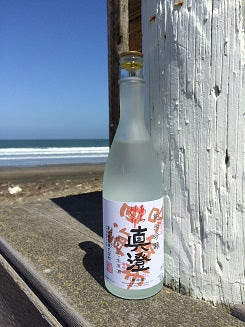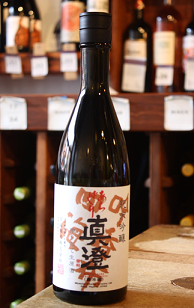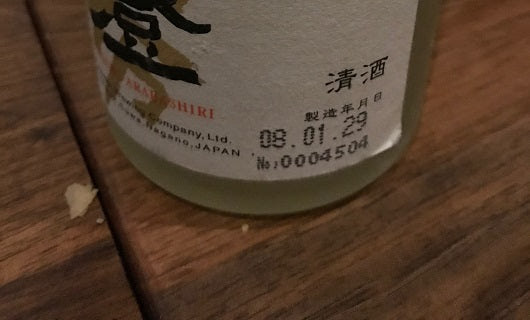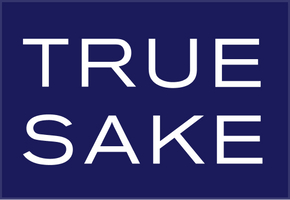Sake Season – The Adventures of Masumi Arabashiri
One of the cool things about being in an industry for a long period of time, is that you get to track the plight of certain sakes! Some brands come and go and the same can be said for certain products. Over the years, I’ve personally lamented the disappearance of certain brews that I really enjoyed. But for one reason or another, the importers or distributors feel that they don’t belong in their portfolios any more.
But the best part of tracking products are watching certain sakes enter the market, become popular, and then become expected and necessary! Certain sakes are hallmarks within the industry, and they become almost legendary. One such product is Masumi Arabashiri. I’ve sold this sake from the first day that it entered the market, over a decade ago, and I look forward to each spring when it adorns our nama shelves.

Back then there was not a lot of nama or unpasteurized sake being exported to the US, and in many cases this brew was the first nama that a generation of American sake drinkers got the chance to taste. Historically, it has been an eye-opening sake, but when it was your first taste of “raw” sake it truly was eye-opening. Masumi Arabashiri became the first sake that customers anticipated in the US market! And I was one of those fans who couldn’t wait until March came around.
Since we are in the explaining business, this sake made us do a lot of explaining! What is namazake(nama sake)? What is Arabashiri? What is “pressing” sake? Yup, we had to do a lot of work educating customers who enjoyed this product so much. And in the process, we got to do our own form of studying and exploring in a very sake scientific manner. But first, what is “Arabashiri” sake? Philip Harper once stated that “Arabashiri is the first run-off of when a batch is pressed. Sometimes it’s sold separately carrying this name.”
John Gauntner wrote about Arabashiri in one of his newsletters and spelled it out this way:
“After a tank of “moromi” (fermenting mash) has run its course, it is ready to be pressed through a mesh to allow the clear or slightly amber sake to pass through. While the lees, the rice solids, that did not or could not ferment, are retained behind. However, at first, when the moromi-laden cloth bags are laid into the fune, the sake will run out of its own accord, under only the weight of the bags, with no need to crank the lid down into the box yet. This free-run fresh sake is known as “arabashiri,” which means “rough run.” And slightly rough it is, in a brash and appealing kind of way. So appealing, is it that many brewers market sake with the term arabashiri on the label, and it is quite likely you will come across it from time to time.”
And the Master Kikisake-shi Program from SSI states:
“Arabashiri is the first of three batches of sake separated from the sake lees during pressing. Arabashiri is the free-flowing sake that runs off before any pressure has been applied to the moromi. Because each batch of sake only yields a small amount of the aromatic arabashiri, it is very expensive.”
So of course, at the time that it came to market I too had many questions as to how much was made and how was it so affordable. But let's get back to that in a bit. I want to focus on the impact (pun intended) that this sake had on the market. Basically, the Masumi Arabashiri became the closest vehicle for a new generation of sake drinkers to taste fresh and vivid unpasteurized sake. Almost just like drinking from the tank without going to a brewery. It was a liquid ticket to really get into the meaning of sake.

I had a ton of fun with this sake personally. Yes, I paired it with every food known to mankind. I took it to many restaurants in SF from Indian and Thai to Vietnamese and Italian. Where I went, Masumi Arabashiri went. But I also did something very out of the box. I started aging the Arabashiri each year. I found that it did very well after being laid down for several years. So much so, I told the importers of this sake that they should age some for themselves. Yes, there was a little blow back from some of the unoriginal sake jokers in the industry who scolded me for aging a nama sake, but even they got on the train that I started. I also had the pleasure of knowing the owner of Masumi, and often told him about my aging and food pairing adventures, which pleased him greatly.
Now, let’s get back to the shelf history of this wildly popular and “anticipated” sake. In the first few years, we would get inventory in March and it would sell out by June. But slowly the supply of this fresh sake lasted longer and longer into the year! Yay! Customers loved it. Being able to buy the Arabashiri into August and September was the bomb, but it also made me scratch my head a little. How could Masumi make such vast quantities of such a limited batch of sake? So I went up river and asked the powers that be this very question. Yes, there was a lot of hawing and hemming, but in the end it was understood that Masumi Arabashiri was really only Arabashiri in name only to achieve such quantities. As pointed out true Arabashiri is made by using an old press called a fune and filling mesh bags, which is very labor intensive and painstakingly difficult, and it is not that economical. So there are other ways to skin a cat I imagine, but even when I took my daughters to their kura in Nagano three summers ago I forgot to ask this specific question.
Another stellar point about this remarkable sake is that it is very consistent. My reviews from the first year that it was released over a decade ago to this year are very similar and I love that. That’s why I say that it has a generation of sake drinkers in its corner. It was like a first love! And you rarely forget your first love. Even if the packaging changes. Initially and for years the Arabashiri came in a clear frosted bottle, which was very unique to the US market at that time. Then the bottle changed to brown, but the label has pretty much stayed identical. I did notice that they have gone to the dark green bottle for this year’s release.
Masumi calls their Arabashiri “First Run” for a reason that you now know. It is an amazingly delicious and fun sake that has a large fan base, even with all of the other nama sake out there. It is dependable, consistent, and outright tasty. For me it always drinks fun, and I enjoy the hidden and subtle notes that I have come to learn year-in and year-out. Can you say citrus? Yup, I always pull citrus tones from grapefruit to tangerine each and every year. But wait! There’s more.

For our True Sake employee party this year, I broke out a frosted clear bottle of Masumi’s “First Run.” This wasn’t just any bottle of Arabashiri. Nope. This bottle had the date 2008.01 on it! That’s right. It was a ten-year-old bottle of a living and breathing Masumi Arabashiri, and my team is probably the only group outside or maybe even inside Japan to taste this version of “First Run!” How was it? Amazing! It still had a nama nose with no hine! It was a little sweeter and had some acidity issues after being open for a while, but on the whole it drank bright and fun! How cool is that! Please check out my review for this year’s Masumi Arabashiri in the New Store Arrivals section of this newsletter. Did I write this ten year’s ago or this year? You be the judge!
